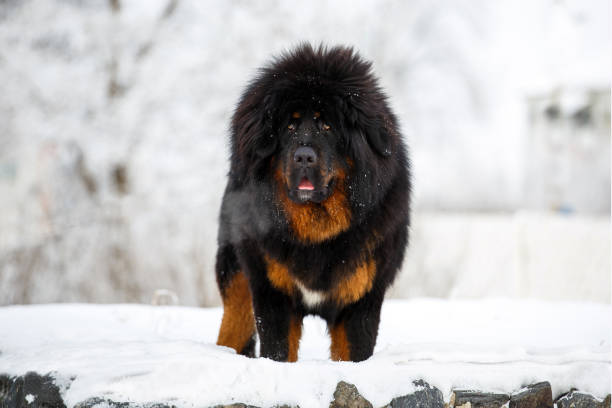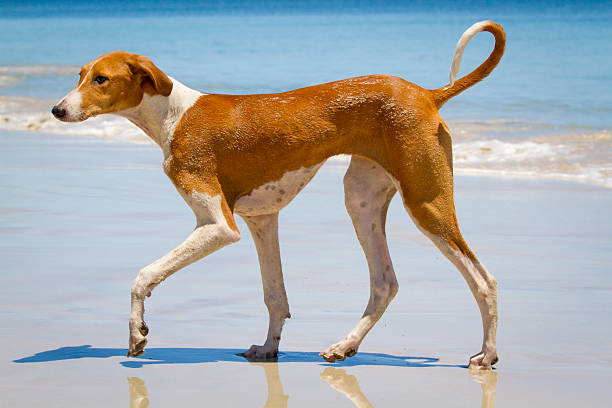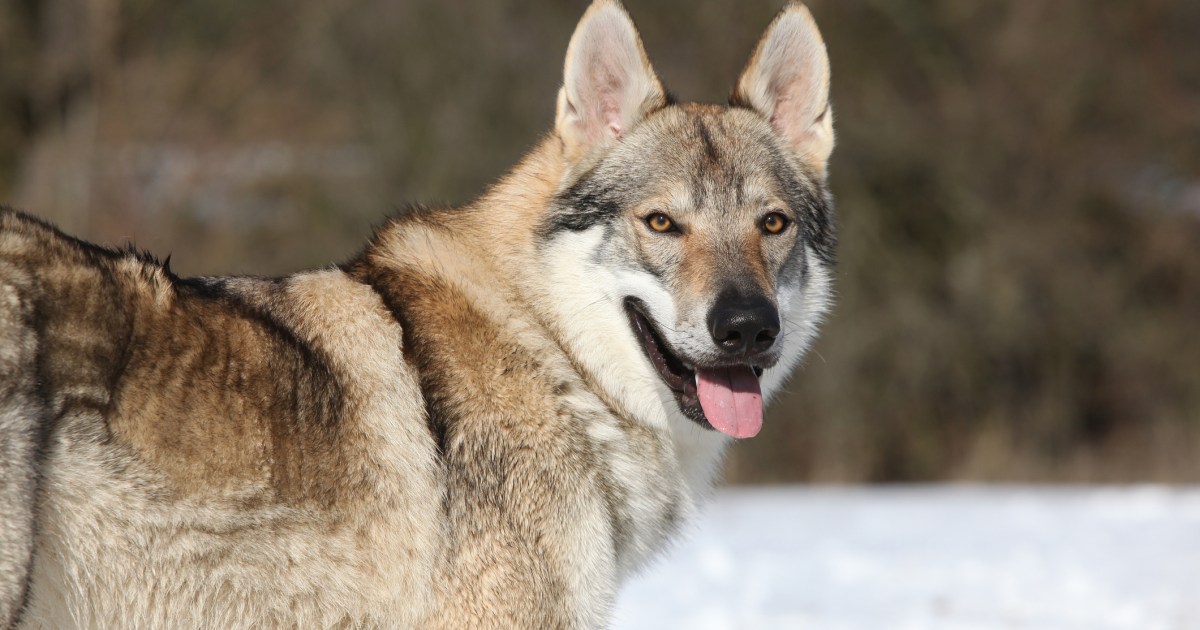Exploring Dog Breeds Not Commonly Found in the United States and Why:
When it comes to dogs, the United States is home to many popular breeds like the Labrador Retriever, German Shepherd, and Golden Retriever. However, there are numerous fascinating dog breeds that are less commonly found in the U.S., each with unique characteristics and histories. In this article, we will explore some of these lesser-known breeds, their origins, and why they are rare in the United States. This guide will also incorporate SEO keywords related to pet care to help you find relevant information about these unique breeds.
1. Tibetan Mastiff:

Overview:
The Tibetan Mastiff is a giant breed known for its imposing size and thick, double-layer coat. Originating from Tibet, these dogs were traditionally used as guard dogs for livestock and property.
Why They Are Rare:
Tibetan Mastiffs are not commonly found in the U.S. due to their specific care requirements and the need for ample space to roam. Their thick coats make them more suited to colder climates, which can be a challenge in many parts of the U.S. Additionally, their independent and sometimes stubborn nature requires experienced owners.
Pet Care Considerations:
- Grooming: Regular grooming is essential to manage their thick fur.
- Exercise: They need plenty of exercise and space to roam.
- Training: Consistent and firm training is necessary to manage their independent nature.
2. Azawakh:

Overview:
The Azawakh is a sighthound breed originating from the Sahel region of Africa. They are known for their slender build, speed, and agility.
Why They Are Rare:
The Azawakh’s rarity in the U.S. can be attributed to their limited export from their native region and their specific needs. They are not as well-known as other sighthound breeds like the Greyhound or Whippet.
Pet Care Considerations:
- Exercise: Azawakhs require plenty of exercise to maintain their agility and health.
- Climate: They are suited to warmer climates due to their short coat.
- Socialization: Early socialization is important to ensure they are well-adjusted pets.
3. Thai Ridgeback:

Overview:
The Thai Ridgeback is a unique breed from Thailand, recognizable by the distinctive ridge of hair running along its back. They are known for their agility and strong hunting instincts.
Why They Are Rare:
Thai Ridgebacks are rare in the U.S. because they are not widely recognized outside of their native Thailand. Their independent nature and need for proper training also make them less popular as pets.
Pet Care Considerations:
- Grooming: Minimal grooming is required due to their short coat.
- Training: They need consistent training and early socialization.
- Exercise: Regular exercise is necessary to keep them healthy and happy.
4. Karelian Bear Dog:

Overview:
The Karelian Bear Dog hails from Finland and is known for its bravery and hunting skills, particularly in bear hunting.
Why They Are Rare:
This breed’s rarity in the U.S. is due to their specific use in hunting large game, which is not as common in the United States. Additionally, they are not widely bred outside of Finland.
Pet Care Considerations:
- Exercise: High energy levels require ample exercise.
- Training: They need experienced handlers due to their strong hunting instincts.
- Grooming: Regular grooming is necessary to maintain their dense coat.
5. Catalburun (Turkish Pointer)
Overview:
The Catalburun, also known as the Turkish Pointer, is a rare breed from Turkey known for its distinctive split nose and exceptional tracking abilities.
Why They Are Rare:
The Catalburun is rare outside of Turkey due to limited breeding and their specific use as hunting dogs in their native region. Their unique appearance also makes them less popular as family pets.
Pet Care Considerations:
- Exercise: They require regular exercise to keep their tracking skills sharp.
- Training: Training should focus on harnessing their hunting instincts.
- Grooming: Regular grooming is needed to keep their coat in good condition.
6. Czechoslovakian Vlcak:

Overview:
The Czechoslovakian Vlcak, or Czechoslovakian Wolfdog, is a relatively new breed developed in Czechoslovakia by crossing German Shepherds with Carpathian Wolves.
Why They Are Rare:
This breed is rare in the U.S. due to their recent development and the specific requirements needed to handle their wild ancestry. They are not suited for inexperienced dog owners.
Pet Care Considerations:
- Training: Intensive training and socialization are crucial.
- Exercise: They need extensive exercise and mental stimulation.
- Environment: A secure and spacious environment is necessary to accommodate their high energy levels.
7. Xoloitzcuintli:
Overview
The Xoloitzcuintli, or Mexican Hairless Dog, is an ancient breed from Mexico, known for its hairless appearance and calm demeanor.
Why They Are Rare:
While gaining popularity, Xoloitzcuintlis are still rare in the U.S. due to their unique appearance and the specific care required for their skin.
Pet Care Considerations:
- Skin Care: Regular skin care routines are essential to prevent sunburn and infections.
- Exercise: Moderate exercise is needed to keep them healthy.
- Climate: They are best suited to warmer climates.
8. Telomian:
Overview:
The Telomian is an indigenous breed from Malaysia, known for its agility and climbing abilities.
Why They Are Rare:
Telomians are rare outside of Malaysia due to limited breeding programs and their specific origins in remote areas. Their rarity makes them less familiar to potential dog owners.
Pet Care Considerations:
- Exercise: High energy levels require ample exercise and mental stimulation.
- Environment: They need environments that cater to their climbing instincts.
- Grooming: Minimal grooming is required due to their short coat.
9. Peruvian Inca Orchid:
Overview:
The Peruvian Inca Orchid, also known as the Peruvian Hairless Dog, is a unique breed from Peru, known for its hairless body and ancient lineage.
Why They Are Rare:
This breed’s rarity in the U.S. is due to their specific appearance and the care required for hairless dogs. They are not as widely recognized as other breeds.
Pet Care Considerations:
- Skin Care: Regular skin care is essential to protect against sunburn and skin issues.
- Exercise: Moderate exercise is necessary to keep them healthy.
- Climate: They thrive in warmer climates.
10. Fila Brasileiro:
Overview:
The Fila Brasileiro, or Brazilian Mastiff, is a large and powerful breed from Brazil, known for its loyalty and protective nature.
Why They Are Rare:
Filas are rare in the U.S. due to their size, strength, and the specific training required to manage their protective instincts. They are not suitable for inexperienced owners.
Pet Care Considerations:
- Training: Intensive training and early socialization are crucial.
- Exercise: They require plenty of exercise to maintain their health.
- Grooming: Regular grooming is needed to keep their coat in good condition.
Exploring dog breeds not commonly found in the United States reveals a fascinating world of unique characteristics, histories, and care requirements. While these breeds may be rare, they offer unique companionship for those willing to meet their specific needs. Understanding the reasons for their rarity and the necessary pet care considerations can help potential owners make informed decisions. Incorporating these lesser-known breeds into your pet care knowledge expands your understanding of the diverse world of dogs and highlights the importance of responsible pet ownership.
